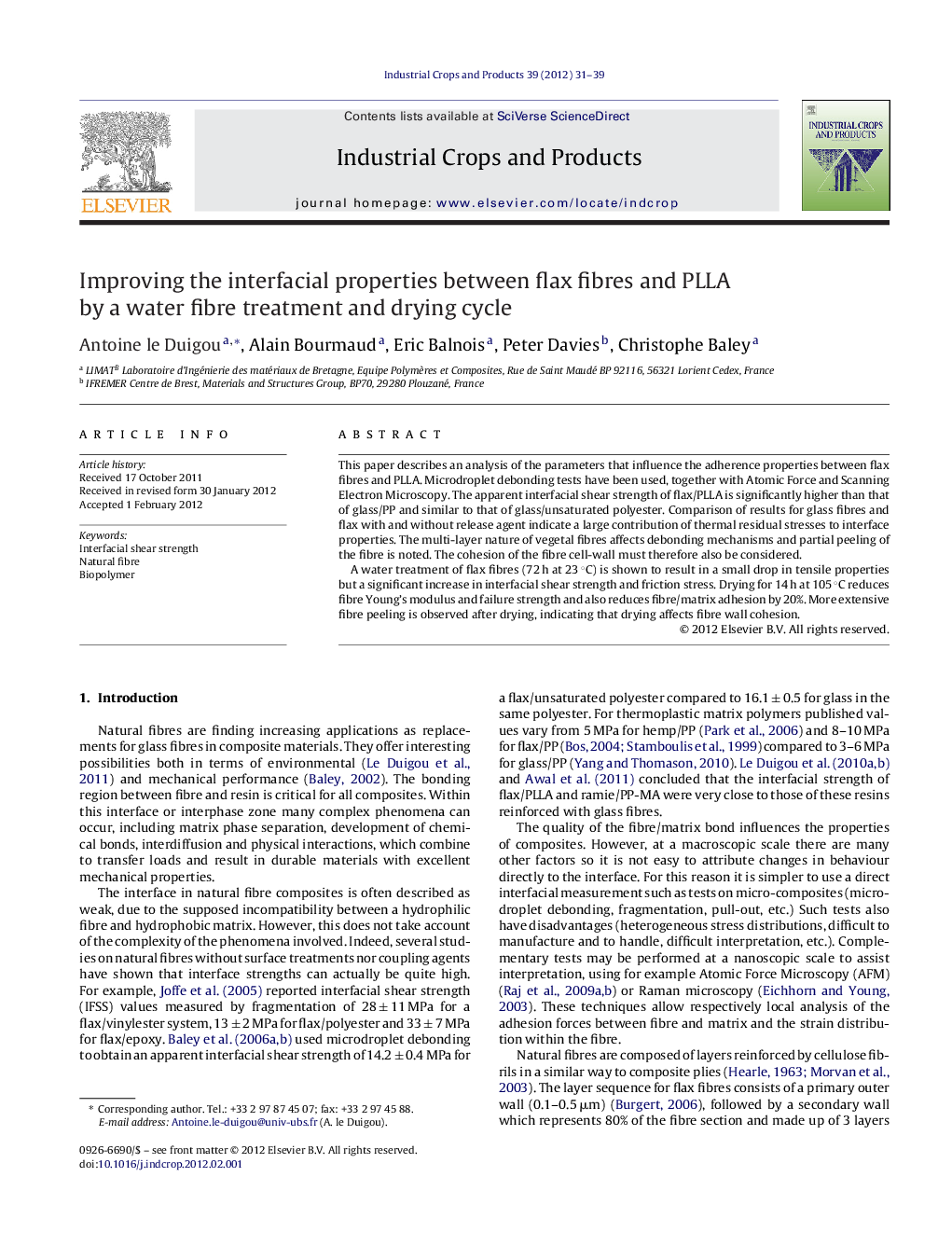| Article ID | Journal | Published Year | Pages | File Type |
|---|---|---|---|---|
| 4514311 | Industrial Crops and Products | 2012 | 9 Pages |
This paper describes an analysis of the parameters that influence the adherence properties between flax fibres and PLLA. Microdroplet debonding tests have been used, together with Atomic Force and Scanning Electron Microscopy. The apparent interfacial shear strength of flax/PLLA is significantly higher than that of glass/PP and similar to that of glass/unsaturated polyester. Comparison of results for glass fibres and flax with and without release agent indicate a large contribution of thermal residual stresses to interface properties. The multi-layer nature of vegetal fibres affects debonding mechanisms and partial peeling of the fibre is noted. The cohesion of the fibre cell-wall must therefore also be considered.A water treatment of flax fibres (72 h at 23 °C) is shown to result in a small drop in tensile properties but a significant increase in interfacial shear strength and friction stress. Drying for 14 h at 105 °C reduces fibre Young's modulus and failure strength and also reduces fibre/matrix adhesion by 20%. More extensive fibre peeling is observed after drying, indicating that drying affects fibre wall cohesion.
► We evaluate the parameters that influence the adherence properties between flax fibres and PLLA. ► Large contribution of thermal residual stresses to interface properties. ► Partial peeling of the fibre is noted after debonding. ► Water treatment of flax fibres induces a small drop in tensile properties and an increase in interfacial shear strength and friction stress. ► Drying for 14 h at 105 °C reduces fibre tensile properties and fibre/matrix adhesion.
